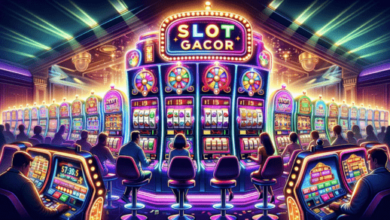Indian Satta, Indian Matka, Final Ank, and Matka 420: Unveiling the Intriguing World of Gambling

In the colorful tapestry of Indian entertainment and leisure activities, there exists a unique and enigmatic subculture – the world of Indian Satta, Indian Matka, Final Ank, and matka 420. These terms may sound unfamiliar to some, but to others, they are synonymous with the thrill and excitement of gambling in India. In this article, we will embark on a journey to uncover the mysteries, history, and intricacies of these gambling games that have captured the imagination of millions.
What is Indian Satta?
Indian Satta, often simply referred to as “Satta,” is a form of lottery and gambling that originated in India. It involves betting on numbers, and the game has evolved over the years into various forms and variations. Players place their bets on selected numbers, and if their chosen numbers match the winning ones, they win a substantial prize.
The Origins of Indian Satta
The origins of Indian Satta can be traced back to the pre-independence era when it was known as “Ankada Jugar.” It was initially played in a rudimentary form, where betting was done on the opening and closing rates of cotton from the New York Cotton Exchange. Over time, it transformed into a more organized and widespread form of gambling, encompassing a wider range of numbers and betting options.
Indian Matka: A Close Cousin of Satta
Indian Matka, often used interchangeably with Satta, is another popular form of gambling. However, it has its distinct characteristics and history. The word “Matka” means earthen pot, which was initially used to draw random numbers.
The Matka System
In the Matka game, players choose a set of numbers from 0 to 9 and bet on the combination. The winning numbers are drawn twice daily, once in the morning (open) and once in the evening (close). The game’s simplicity and the chance to win big have made it a favorite pastime for many.
Decoding the Final Ank
Final Ank, an intriguing term in the world of Indian gambling, refers to the final digits of the Matka result. It is essential for players to understand the concept of the Final Ank, as it can significantly impact their chances of winning.
Calculating the Final Ank
The Final Ank is calculated based on a mathematical formula that involves adding the digits of the open and close results and then selecting the final digit of the total. This digit is known as the Final Ank, and it plays a crucial role in determining the winners.
The Intriguing World of Matka 420
Matka 420 is a term often associated with the Matka gambling game. It signifies a specific type of bet that is considered riskier but can yield higher rewards.
Understanding Matka 420 Bets
In a Matka 420 bet, players select a set of numbers and bet on their combined total. The risk factor comes into play because players must predict the sum of the open and close results, which can be a challenging task. However, the allure of higher payouts attracts those willing to take a gamble.
The Popularity and Controversies
The world of Indian Satta, Indian Matka, Final Ank, and Matka 420 is not without its share of popularity and controversies. While these games have a dedicated following and have provided entertainment for decades, they have also faced legal and ethical challenges.
Legal and Ethical Concerns
The legality of these gambling activities varies across different states in India. Some consider them a harmless form of entertainment, while others view them as a social evil leading to addiction and financial ruin. It is crucial for players to be aware of the legal implications in their region.
In the labyrinthine landscape of Indian Satta, Indian Matka, Final Ank, and Matka 420, one finds a unique blend of tradition, chance, and intrigue. These games have withstood the test of time, offering a thrilling pastime for enthusiasts while sparking debates on their social impact.
Whether you’re a newcomer curious about these games or a seasoned player, it’s essential to approach them with caution and responsibility. Gambling should always be viewed as a form of entertainment, not a guaranteed path to wealth.




